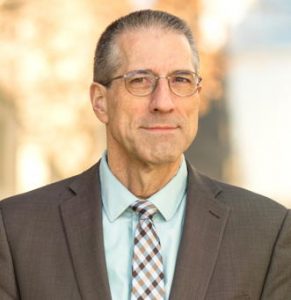MUSIC OR NOT, LET’S DANCE: Ballet performs three works with varying relationships to music
It’s often said that choreography begins with music, but the Kansas City Ballet’s upcoming spring season suggests that the situation is a bit more complex than that. In fact the program presents three works with three very different relationships to music: one that clearly grew out of a preexisting score (William Whitener’s Mercy of the Elements), one in which dance and music were created together (Twyla Tharp’s The Catherine Wheel Suite), and a third that uses no music at all (Jerome Robbins’ Moves). Foremost among the three is Whitener’s 20-minute world premiere danced to Nikolai Rimsky-Korsakov’s Quintet for Piano and Winds, which might indeed be the first piece of choreography set to this Russian master’s rare piece from 1876. “It’s like he made it for dancing,” William says. “The music is filled with life and humor and dark undertones. It’s moody, it’s playful: It lends itself to dance, plain and simple. It sounds like it was commissioned for a choreographer—it’s amazing in that respect.”
Recently we watched a rehearsal of the piece at the Ballet’s studios on Broadway—somewhat wistfully, as it was one of the last times the company would rehearse in the temporary space before moving into its permanent home at the Todd Bolender Center in the fall. With us was the Ballet’s resourceful music director Ramona Pansegrau, who watched the Rimsky-Korsakov score carefully as the dancers moved to a recorded version of the Quintet—marking the pages with notes that would later aid her in the live performance of the music. “I keep a list of things that people should choreograph,” says Ramona, who suggested the Quintet to William when he approached her about his new work. “Choreographers call me all the time.” On the dance floor, Alexander Peters and Laura Wolfe joined the company for a partial run-through of the third of the work’s three movements.
The title of Mercy of the Elements was not inspired by anything specific: It was just a choice phrase that William came across while reading about Mark Twain (a choreographic vision of whose Tom Sawyer will be a highlight of the Ballet’s first season in the Kauffman Center for the Performing Arts) and liked the sound of. “I think it can be interpreted in any number of ways and I wouldn’t want to impinge on the viewers’ interpretive sensibility. It’s a title, I think it’s catchy. It’s not literal.” At the same time, he says, dance itself is obviously an “elemental” activity. “It’s a primary instinct. It’s fiery, it’s earthy, it’s like air, it’s like water. Dancing has all these elements.” And “mercy,” he says, “is such a lovely word.”
William says he was happy to find the Rimsky-Korsakov because it has “meat on its bones.” One of the hallmarks of a terrific piece of music, he says, has to do with “how many times you can listen to it. And when you’re working with it like we do, day after day, it plays in your head at night and sometimes you have to … find some way to stop that tape from rolling in your head.” If the music is good, though “it’s worth remembering—and that’s what happened with the Rimsky-Korsakov.” William has set the first movement to a bold introductory dance and the finale to a joyous display. The central piece starts as a slow movement but becomes a fugue, which he sets as a “canon”: The dancer in front begins the movement and dancers in a V-formation gradually imitate him, two by two, up the sides of the “V.”
Jerome Robbins’ 1959 ballet Moves stands in contrast to William’s piece because it is danced in complete silence—a not uncommon practice for modern dance but somewhat of a rarity in ballet, William says. “It’s dance speaking for itself. The rhythms of the body and the special configurations … tell their own story about human relationships.” The air shifts when someone moves: A body in motion “creates a reaction with another dancer,” making it possible for dancers to stay together even when they don’t see each other. “It has to do with being acutely aware of other people in your surroundings, and dance is a very good medium for that—whether there’s music or not. … There’s a heightened reality when music is eliminated as one of the components.”
Rounding out the program is a reprise of The Catherine Wheel Suite, to music by David Byrne, a piece that Twyla Tharp created especially for Kansas City (William being a former dancer in her company) from her huge 1983 The Catherine Wheel. The New Yorker called the full-length version “the meeting of two of America’s most original minds.” Kansas City Ballet gave the Suite’s world premiere in 2006.
These are exciting times for the Kansas City Ballet, William says, as it looks forward to moving into both the Bolender Center and the Kauffman Center. “It’s a great way to finish the season at the Lyric Theatre, because it’s an extremely high-energy program. We’re going out with high velocity.”
The Ballet’s program runs May 5th through the 8th. Call 816-931-2232 or go to www.kcballet.org.
.
IN BRIEF:
* Fans of J.S. Bach, get ready: The Kansas City Area Chapter of the American Guild of Organists presents Bachathon XXXII (!), from 2 to 7 p.m. on May 1st at Grace and Holy Trinity Cathedral. “Come when you can, leave when you must” is the motto of this long-running yearly celebration, which features performances of Bach’s choral, chamber and organ works. This year’s theme is “Chorales: Sources of Inspiration and Repertoire of J.S. Bach.” Musicians will include Mark Ball and his Village Presbyterian Church Choir, Arnold Epley’s Musica Vocale with Jay Carter’s KC Baroque Consortium, and top organists including Sharon Hettinger, David Pickering, Jan Kraybill. A complete schedule is at www.kcago.com.
To reach Paul Horsley, performing arts editor, send email to phorsley@sbcglobal.net.





